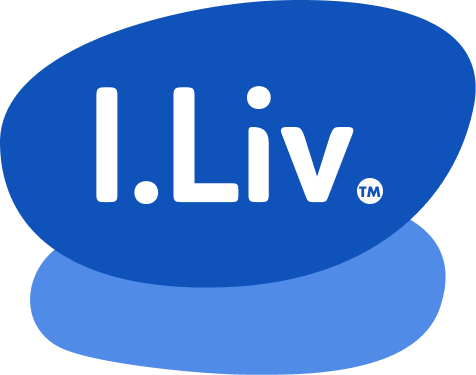Exploring the evolving landscape of corporate leadership development, this month we spotlight Susan Colantuono’s influential insights on the underrepresentation of women in top executive roles—a matter that calls for urgent discussion and strategic action. Despite progress towards gender diversity, a critical gap she identifies as the “missing 33%” remains in leadership development. Colantuono defines leadership as “using the greatness in you to achieve and sustain extraordinary outcomes by engaging the greatness in others.” This perspective is pivotal in her renowned TED Talk and her book “No Ceilings, No Walls”, which emphasize the often-overlooked business, strategic, and financial acumen essential for climbing to the highest leadership echelons. By addressing this overlooked third, we can significantly alter the trajectory for women aspiring to lead, positioning it as a crucial area for those dedicated to cultivating a more inclusive and dynamic leadership environment.

Understanding The Missing 33%™
The Missing 33%™ represents a pivotal concept introduced by Susan Colantuono, which refers to the crucial business, strategic, and financial acumen that is often not adequately emphasized in leadership development programs for women. This essential third of the career success formula includes understanding the financial drivers of the business, mastering the industry landscape, and strategically aligning one’s work to the organization’s bottom line. These skills are applicable at every career stage and are vital for anyone aiming for senior positions, yet frequently glossed over in professional development resources targeted at women. This oversight can unintentionally hold women back from advancing to the highest levels of leadership.
Key Areas of Focus for Aspiring Women Leaders
To bridge the gap identified as The Missing 33%™ and propel forward in leadership roles, aspiring women leaders must cultivate expertise in several critical areas:
Business Acumen: To truly excel in leadership, understanding the core mechanisms of your business and how your immediate responsibilities contribute to organizational outcomes is essential. This entails a deep understanding of the value chain, how different departments contribute, the business’s operational flow, and the external factors affecting organizational success. Mastery here allows you to anticipate needs and drive initiatives that align closely with the company’s strategic goals.
Financial Acumen: A robust grasp of financial literacy empowers you to make informed decisions that positively impact the bottom line. Skills in interpreting financial statements, managing budgets, and understanding economic underpinnings of business operations are indispensable. These competencies enable leaders to justify project returns, assess investment viability, and contribute to discussions that affect the company’s financial health.
Strategic Acumen: Developing the ability to think strategically about the business as a holistic entity rather than focusing solely on one’s specialized area is a game-changer. This strategic acuity involves identifying opportunities for growth, foreseeing potential challenges, and innovating solutions that advance the organization’s objectives. Leaders with strategic vision can influence the trajectory of their companies and ensure alignment with long-term goals.
By honing these skills, women can enhance their leadership presence and demonstrate their readiness to take on higher-level executive roles, effectively addressing the critical areas of development often overlooked in traditional leadership pathways.
For Women Leaders: Practical Steps to Develop The Missing 33%™
Developing The Missing 33%™—business, strategic, and financial acumen—is vital for women aiming to ascend to higher positions in leadership. Here are practical strategies to enhance these crucial skills:
1. Seek Strategic Opportunities: Actively pursue roles or projects within your organization that provide direct exposure to financial management and strategic planning. Whether it’s a temporary assignment in a different department or leading a project that requires close interaction with these functions, hands-on experience is invaluable.
2. Educational Opportunities: Invest in your professional development by enrolling in courses that enhance financial literacy and strategic thinking. Many universities and online platforms offer specialized courses tailored to developing these skills in a business context.
3. Mentorship and Sponsorship: Engage with mentors and sponsors who can provide insights into the organization’s strategy and financial management. These relationships can be a powerful catalyst for growth, offering guidance, feedback, and opportunities to take on challenging assignments that build your acumen.
4. Network Intelligently: Participate in industry conferences, seminars, and networking events that focus on strategic and financial themes. These forums are not only great for learning but also for connecting with professionals who can broaden your understanding of these areas.
5. Practical Application: Apply your learning in real-world scenarios. For example, volunteer to manage part of your department’s budget or take the lead in a strategy session. These practical applications help solidify your understanding and demonstrate your growing capability in these areas.
6. Leverage Technology: Utilize software and tools that provide insights into business analytics, financial forecasting, and strategic planning. Familiarity with these tools not only enhances your skill set but also increases your efficiency in these areas.
By taking these steps, you not only develop essential skills that enhance your leadership profile but also position yourself as a competent leader capable of guiding your organization through complex challenges and opportunities.

For Organizations: How To Support Women Leaders
Organizations have a pivotal role in sculpting the landscape of leadership for women, especially in embedding the crucial “missing 33%” skills—business, strategic, and financial acumen—into their development programs. Here’s how organizations can recalibrate their leadership development programs and foster a supportive environment:
1. Integrating Comprehensive Training: Leadership development programs must transcend conventional skill sets and incorporate training that enhances business acumen, financial literacy, and strategic insight. Tailored workshops, simulations, and case studies can be instrumental in this integration, providing women leaders with the tools they need to succeed on a broader platform.
2. Cultivating Sponsorship: It’s crucial for organizations to not just mentor but also sponsor women leaders. Sponsorship involves senior leaders actively advocating for the advancement of women within the organization, ensuring they are considered for high-impact roles that align with corporate succession plans. This active support is vital for navigating the often complex organizational hierarchies and can significantly accelerate career trajectories.
3. Creating Opportunities for Exposure: Organizations should design roles and assignments that specifically allow women to handle profit-and-loss responsibilities, engage in strategic decision-making processes, and contribute directly to the business’s core operations. These opportunities are essential for practical learning and for showcasing their capability in these areas.
4. Encouraging Networking and Visibility: Encourage women to engage in internal and external networks where strategic and financial discussions take place. Facilitating their visibility in such forums can enhance their knowledge and connect them with influencers who can open doors to new opportunities and insights.
5. Providing Access to Resources: Ensure that women leaders have the same access as their male counterparts to critical business intelligence, industry reports, and forecast data which are essential for informed decision-making and strategic planning.
6. Regular Feedback and Tailored Support: Implement a feedback mechanism that not only assesses performance but also provides constructive feedback and guidance on navigating the business landscape. Tailored support can include personalized coaching sessions focused on developing specific strategic or financial skills.
By adopting these practices, organizations not only empower women to climb the leadership ladder more effectively but also build a more diverse and inclusive leadership team that mirrors the rich tapestry of talents and perspectives needed to drive modern enterprises forward.
The I.Liv Approach
At I.Liv, we greatly admire Susan Colantuono’s framework and systematic approach to leadership development as essential for women striving for top leadership positions. Inspired by her insights, our programs and tools support this philosophy, providing a structured pathway for personal and professional growth.
Join us at I.Liv as we work to create an environment where the leadership potential of women is not just supported but fully realized. Let’s break barriers together with the right tools, knowledge, and community support. Discover how I.Liv’s programs can start you on your path to the top, inspired by the best in leadership.
Sources:
Colantuono, Susan. No Ceilings, No Walls: What Women Haven’t Been Told About Leadership from Career-Start to the Corporate Boardroom. Lead Life Press, 2010.
Colantuono, Susan. “The Career Advice You Probably Didn’t Get.” TEDWomen, November 2013, www.ted.com/talks/susan_colantuono_the_career_advice_you_probably_didn_t_get.

